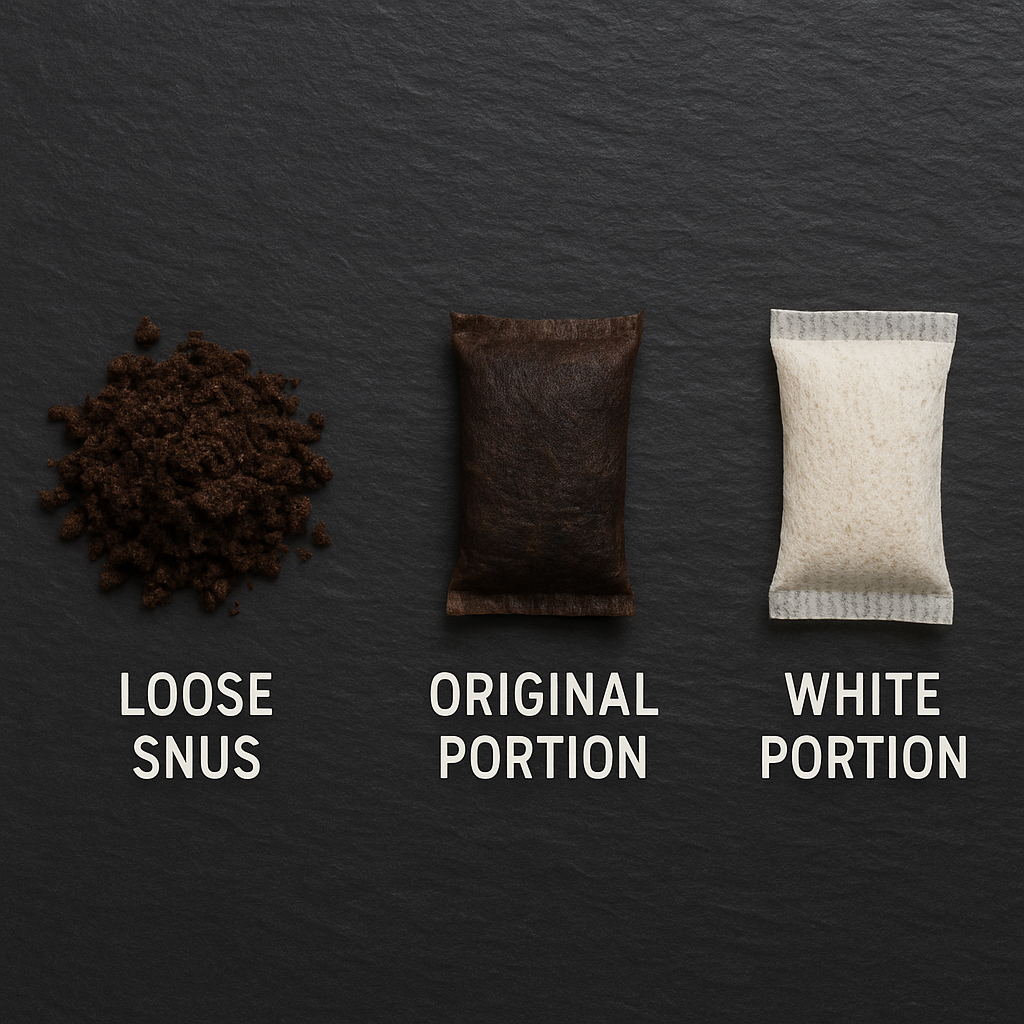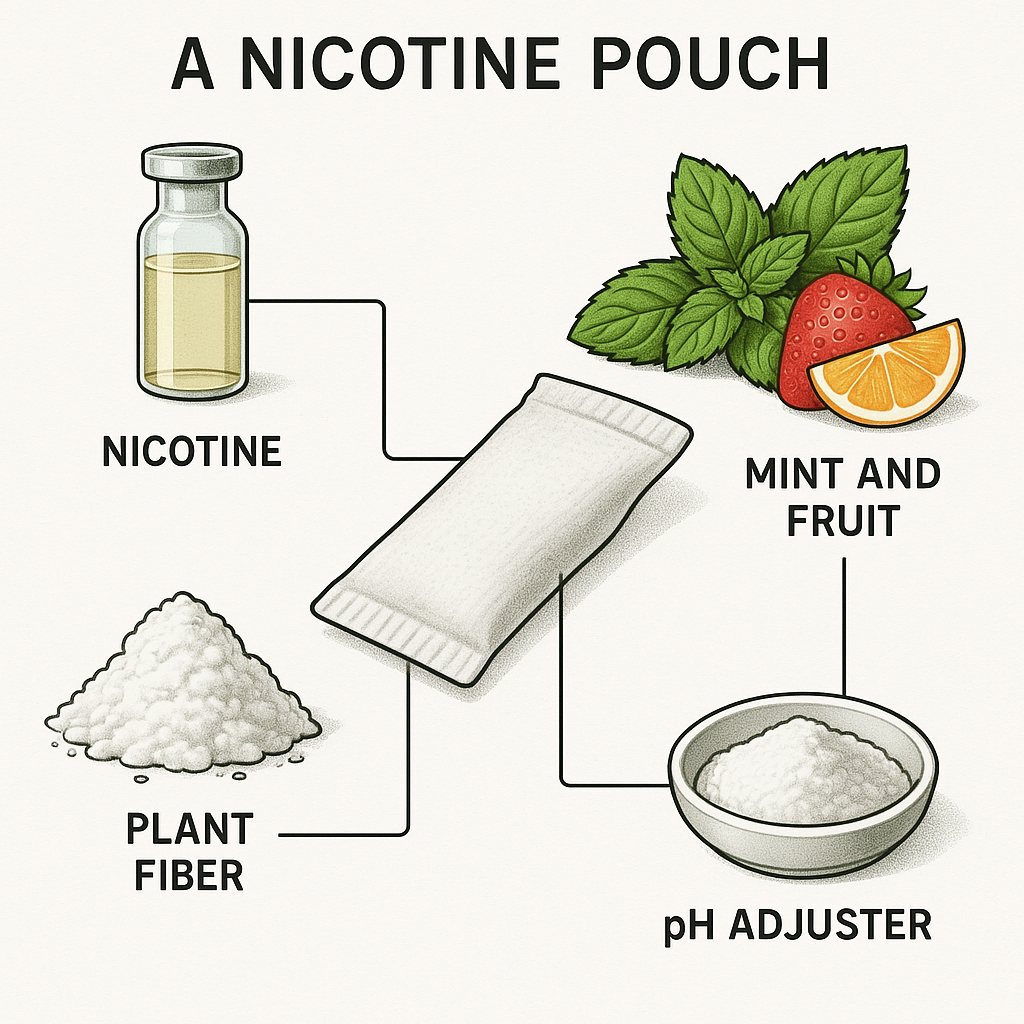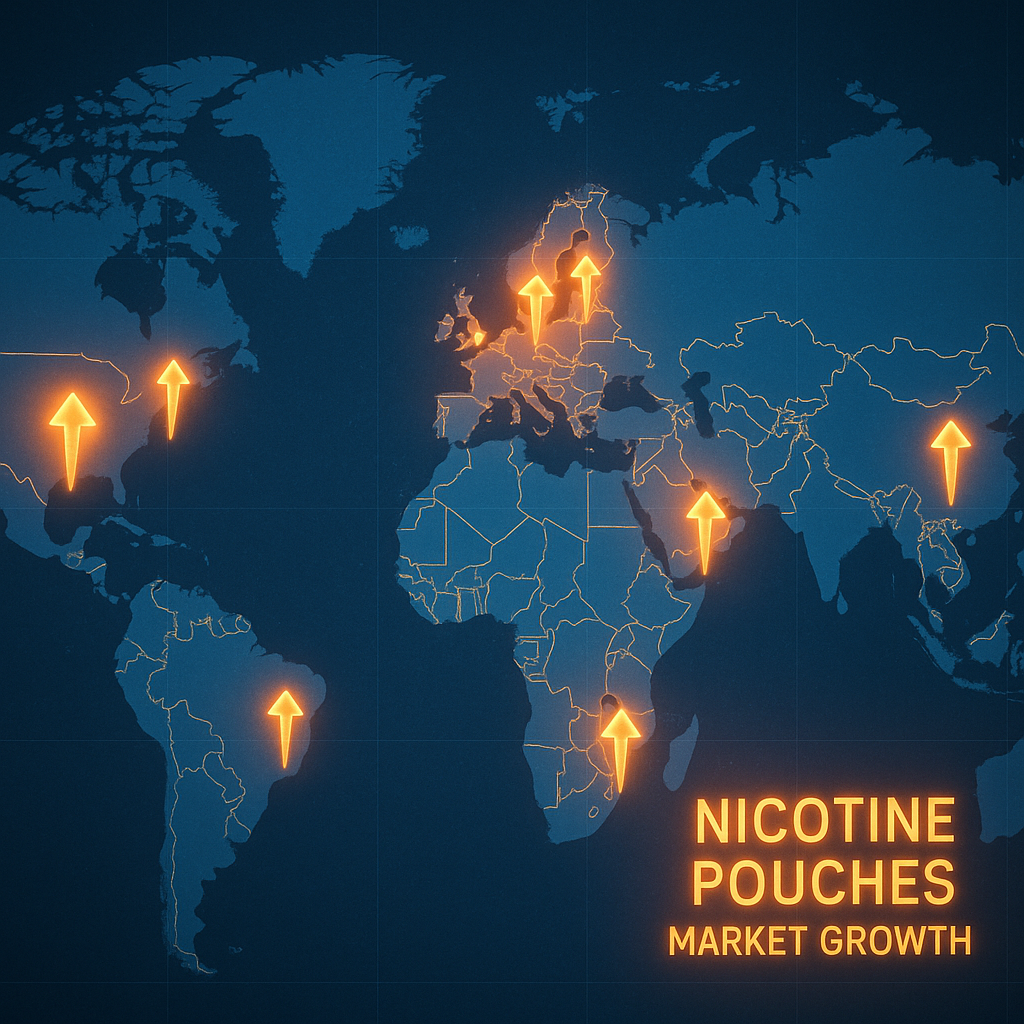Understanding what is snus and the distinction between snus vs nicotine pouches is crucial for navigating the modern oral nicotine market. While both are oral nicotine products, their composition, regulatory status, and market trajectories differ significantly. This guide provides a comprehensive, encyclopedic overview of these two product categories, clarifying if nicotine pouches are the same as snus.
1. What is Snus? A Deep Dive into Traditional Snus
1.1 What is Snus? A Foundational Definition
Snus is a smokeless oral tobacco product that originated in Sweden. It consists of finely ground or pulverized tobacco, mixed with water and salt. Unlike many other forms of smokeless tobacco, snus is typically pasteurized rather than fermented, which significantly alters its chemical profile. It is placed under the upper lip and is not intended for chewing or spitting.
1.2 A Brief History of Snus
The origins of snus trace back to 18th-century Sweden, evolving from dry nasal snuff. The modern formulation and usage method were standardized during the 19th century. Snus holds a unique cultural and legal status in Sweden, being the sole European Union country where its commercial sale remains permitted to an official EU regulation or historical legal document regarding snus ban.
1.3 Composition and Main Types of Snus
Core Ingredients: Traditional snus primarily consists of tobacco, water, salt, and various flavorings, often including notes like bergamot, juniper, or mint.
Categorization by Format:
- Loose Snus (Lös): This is the original format. It consists of a moist, ground tobacco that the user manually forms into a portion, known as a “pris,” for placement under the lip.
- Portion Snus: This format features pre-packaged snus enclosed in small, teabag-like pouches. Portion snus is the most common and widely consumed format today due to its convenience.
Categorization by Pouch Type (within Portion Snus):
- Original Portion: These pouches are moistened after being filled with snus, resulting in a dark, often damp appearance. They are known for a fast and intense release of flavor and nicotine.
- White Portion (Vit): White portion pouches are not moistened after filling, which leads to a drier, lighter-colored pouch. This design aims to reduce drip and provide a slower, more prolonged flavor and nicotine release.
- All-White Portion: This is a sub-category that typically contains trace amounts of bleached tobacco or is entirely tobacco-free, yet visually resembles traditional snus. It serves as a transitional product between traditional snus and modern tobacco-free nicotine pouches.

Key Points from This Section:
- Snus is a smokeless oral tobacco product originating in Sweden, which defines what is snus at its core.
- It is pasteurized and placed under the upper lip.
- It has historical roots in the 18th century and is uniquely legal in Sweden within the EU.
- Main types include loose snus and portion snus, with portion snus further categorized into Original, White, and All-White.
2. The Modern Evolution: Tobacco-Free Nicotine Pouches
2.1 What are Nicotine Pouches?
Nicotine pouches are a modern, tobacco-free oral product designed for nicotine delivery. They contain pharmaceutical-grade nicotine, which can be either synthetic or derived from the tobacco plant. Crucially, these pouches contain no tobacco leaf, dust, or stem, meaning they are fundamentally different from snus. Their primary function is to deliver nicotine without any plant matter from the tobacco itself.
2.2 Origin and Market Emergence
Nicotine pouches represent a 21st-century innovation, developed as an alternative to traditional oral tobacco and vaping products. This category has experienced explosive growth in markets across North America, Europe, and the Middle East, with prominent brands including ZYN, Velo, and Iceberg. The tobacco-free nature of these products allows them to bypass many of the regulations and sales restrictions placed on traditional snus, particularly within the European Union, contributing to their widespread accessibility.
2.3 Core Components of Nicotine Pouches
The composition of nicotine pouches is designed for efficient nicotine delivery without tobacco.
- Nicotine: This is typically present as pharmaceutical-grade nicotine salt or synthetic nicotine, ensuring purity and consistent delivery.
- Fillers: Natural plant-based fibers, such as those derived from eucalyptus or pine, are used to provide the pouch with bulk, texture, and absorbency.
- Flavorings & Sweeteners: A diverse range of food-grade flavorings and non-sugar sweeteners are incorporated to offer a wide array of taste experiences.
- pH Adjusters: Regulators, such as sodium carbonate, are included to optimize the pH level within the pouch. This adjustment is crucial for controlling the rate and efficiency of nicotine absorption.

Key Points from This Section:
- Nicotine pouches are modern, tobacco-free oral products delivering pharmaceutical-grade nicotine.
- They emerged in the 21st century and have seen rapid growth globally, especially in Europe and North America.
- Their tobacco-free status grants them regulatory advantages over traditional snus.
- Core components include nicotine, plant-based fillers, various flavorings, and pH adjusters.
3. The Definitive Comparison: Snus vs Nicotine Pouches

3.1 At-a-Glance: What is the difference between snus and nicotine pouches?
The table below breaks down the fundamental distinctions that define each category, highlighting the core aspects of snus vs nicotine pouches.
| Feature | Traditional Snus | Tobacco-Free Nicotine Pouches |
|---|---|---|
| Primary Ingredient | Ground Tobacco Leaf | Plant-Based Fibers & Pharmaceutical Nicotine |
| Pouch Color | Brown or Discolored (from tobacco) | Pure White |
| Potential for Stains | High | Minimal to None |
| Flavor Profile | Tobacco-forward, often with traditional notes | Extremely broad; fruit, mint, dessert, and cocktail flavors are common |
| Regulatory Status | Heavily regulated; banned for sale in the EU (except Sweden) | Widely available and regulated as a distinct consumer product |
| Market Position | Traditional, Niche | Modern, Mass-Market, Rapid Growth |
3.2 How to Use: A Shared Method
Despite their different compositions, the method of use for portioned snus and nicotine pouches is identical. This shared application method is a point of familiarity for users accustomed to oral tobacco products.
- Step 1: One pouch is removed from its container.
- Step 2: The pouch is then positioned between the upper lip and the gum line.
- Step 3: It is typically left in place for a duration ranging from 15 to 60 minutes, allowing for nicotine and flavor release.
- Step 4: After use, the pouch is removed and disposed of responsibly, often in the can’s designated “catch lid” compartment.
Key Points from This Section:
- The primary distinction between snus and nicotine pouches lies in the presence or absence of tobacco leaf.
- Snus is tobacco-based, often brown, and can cause stains, while nicotine pouches are tobacco-free, pure white, and stain-resistant.
- Nicotine pouches offer a broader flavor spectrum and generally face a more favorable regulatory environment outside of Sweden.
- Despite compositional differences, the method of oral use for portioned products is identical.
4. Market Impact: Why the Snus vs Nicotine Pouches Distinction Matters for Your Business
4.1 The Regulatory Advantage in Europe, North America, and Beyond
The absence of tobacco leaf is the single most significant factor driving the market success of nicotine pouches for businesses. In the European Union, this distinction means nicotine pouches are legally available for sale where traditional snus is explicitly banned, with the exception of Sweden to a regulatory body’s statement on nicotine pouch classification vs. tobacco products. In North America and the Middle East, the “tobacco-free” classification often leads to a more favorable regulatory environment and broader consumer acceptance, presenting significant market opportunities.

4.2 Consumer Perception and Brand Building
Modern consumers in key Western markets often seek alternatives perceived as cleaner and more discreet. The white, stain-free nature of nicotine pouches is a powerful marketing tool that resonates with this consumer preference. Furthermore, the vast flavor potential of nicotine pouches allows brands to innovate and target specific consumer segments far more effectively than the traditional, tobacco-forward flavor profiles typical of snus. Building a brand with nicotine pouches means entering a high-growth, modern category rather than a traditional, niche one.
Key Points from This Section:
- The tobacco-free nature of nicotine pouches provides a significant regulatory advantage in many markets, including the EU (outside Sweden), North America, and the Middle East.
- Consumer perception favors the cleaner, stain-free profile of nicotine pouches.
- The broad flavor options facilitate strong brand innovation and market targeting.
5. Frequently Asked Questions (FAQ)

5.1 Is ZYN snus?
No. ZYN is a brand of nicotine pouches. It is fundamentally different from snus because it contains zero tobacco leaf and is therefore a tobacco-free product.
5.2 Are nicotine pouches the same as snus?
No. While both are oral products used similarly, they are not the same. The key difference lies in the presence of tobacco in snus and its complete absence in nicotine pouches. This distinction addresses the core question of snus vs nicotine pouches. For more information on oral tobacco products, refer to Oral Tobacco Products Explained.
5.3 So, is snus a nicotine pouch?
Technically, a snus pouch is a pouch that contains nicotine. However, in industry and consumer language, the term “nicotine pouch” almost exclusively refers to the tobacco-free product category.
5.4 Is snus the same as ZYN?
No. This is the same question as “are nicotine pouches the same as snus?” asked a different way. Snus contains tobacco, whereas ZYN, as a nicotine pouch brand, does not contain tobacco.
5.5 Which category is more popular globally?
While snus has a deeply entrenched user base primarily in Scandinavia, tobacco-free nicotine pouches are experiencing significantly faster growth. They are achieving far wider popularity across North America, Europe, and other international markets due to their broader legal accessibility and modern appeal.

